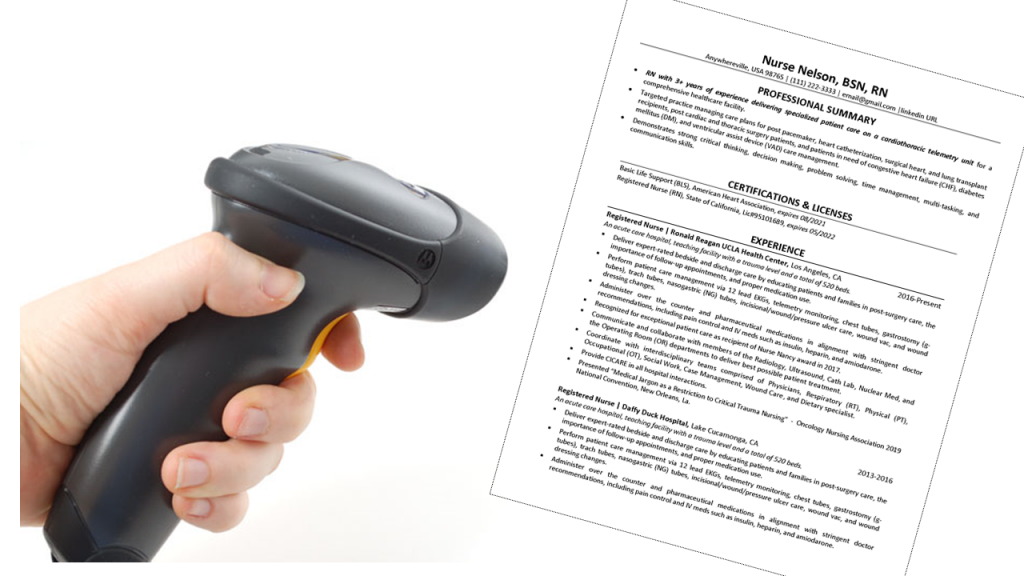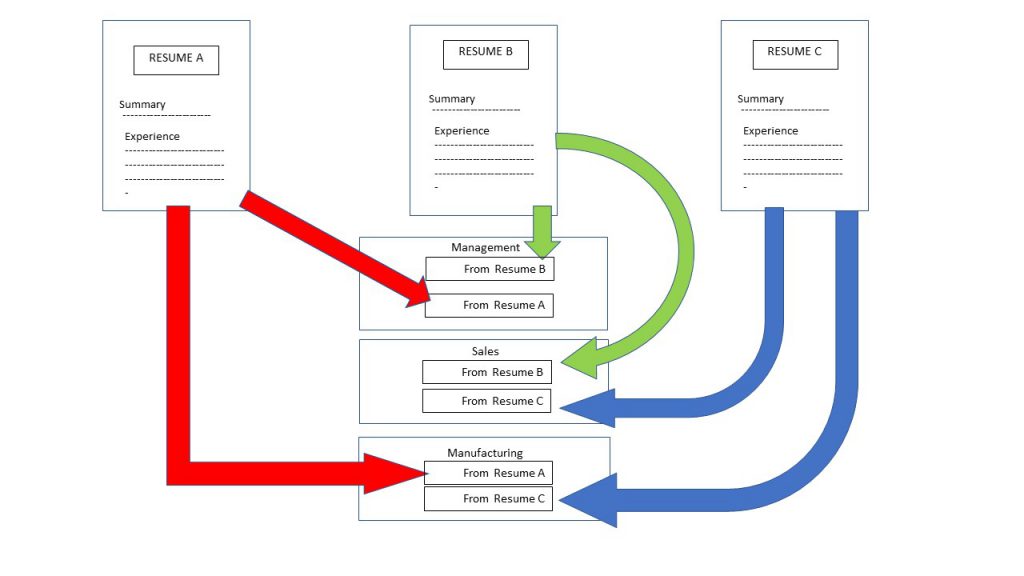Blog
It’s Time to Put Your Resume to Work: Part 11. An Inventory of Your Career: Resume as Assessment

Your resume is a record of your career accomplishments. It lists positions held, skills developed, and assignments completed.
Could your resume be used for another purpose?
How about using your resume as a career assessment?
When you hear the term assessment, you probably think about Myers-Briggs or DiSC or my favorite the CliftonStrengths (StrengthsFinder). These are tools designed to reveal insights about personality, talents, or inclination to succeed. A resume, or the tools used to create one, can do the same thing. The process of reviewing your work history can help you decide your career future.
A resume’s primary use is outward looking. You provide information to a potential employer, to show them what you have done.
Your resume used as an assessment, becomes inward looking. Think of it as a self-review. If you received your resume, what would you hire yourself to do? What do you still need to add to be a prime candidate for your dream job?
The maxim that a resume is a response to a particular job listing has been repeated often in the It’s Time to Put Your Resume to Work blog series. (If you have been reading my blog, thank you very much. If not, please consider following me on LinkedIn and checking out my past posts). For assessment purposes, you are going to look at your career as a whole.
In my blog post of March 2021, the a la carte resume was explained in detail. Here is the abridged version. An a la carte resume is a two-part tool: 1.) An all-inclusive career menu and 2.) The a la carte (pick and choose) resume itself. Using your resume as an assessment tool, puts the first part in the forefront.
The Career Menu
The career menu is a collection of statements covering everything of note about your career.
The career menu can be created as follows:
- Gather all your past resumes.
- Create experience statements about your accomplishments since you created your last resume.
- Create a list of skills and expertise in your career. These are the big topics. Think things like Presenting, Management, Sales, whatever. These will be the “course” headings (like for a meal) for your career menu.
- Deconstruct your past resumes. Take each statement from the experience section and list it under the “course” that covers the skill or expertise described.
- Your LinkedIn profile is another source for statements .

If you want to make sure you don’t forget any “courses”, find several job listings that sound like your ideal job and see what expertise or “courses” they indicate are in demand. Add any additional “courses” discovered in these listings.
If you were creating an a la carte resume to respond to a job listing, you would review the listing, deconstruct it into the expertise required and respond by selecting the statements in your menu that reflect how great a fit you are. For detailed instructions about how to do a la carte resume , go to this blog post.
For assessment purposes, the all-inclusive career menu is the tool that we are using.
Here is an example to clarify the process.
- You are an engineer with a Mechanical Engineering degree
- Plus, half the credits towards a MBA.
- 20 years of experience gained at three companies.
- Work experiences in manufacturing, design, sales, and supervision. with expertise in CAD programs.
- You keep your eyes on job openings in your field.
- You don’t hate your job, but you don’t love it either.
The a la Carte Resume / Assessment Process
Create an a la carte resume menu template with “courses” (section headings) including:
- Manufacturing
- Sales
- Supervision
- Technology
You deconstruct the experience statements in your old resumes. Determine what expertise each statement exhibits. For instance, “Led a team of four evaluating acquisition of a new CAD package.” This could be included in Supervision (“led a team”) and Technology (“new CAD package”).
Next, take the job listings you’ve found for your ideal work. Determine the expertise for those jobs. Compare that to your “courses” list. Add those additional “courses” to your “courses” list.
Now assess how strongly (or weakly) your skills and expertise compare to what is needed to take that next career step.
Using the a la carte resume as an assessment causes you to review your career and see what it tells you about your desirability as a candidate. The all-inclusive career menu is a record of what you have done and what you have not done. It helps reveal what is needed to move forward.
You might want a manager’s job with requirements for experience you don’t currently possess like 10 direct reports, long term planning, and budgeting. Reviewing your all-inclusive menu, you might “discover” that you do actually have that experience but it is listed under a different “course”.
Alternatively, there may be something lacking in your experience, which could lead to several alternative courses of action.
- You might seek opportunities to augment your experience, like asking to lead a group project.
- You may seek more education to gain knowledge about budgets, personnel management, team dynamics.
- You may realize that the additional effort will not lead to work that you are wired to do well. Everyone is not cut out to do every job. (For some perspective on this, see my blog post about Strengths in job search).
- Decide that it’s time to change careers. Set different goals. Go into another line of work. Start a business.
In each of these cases, your plans and decisions will be based on research, leading to a future that is best aligned with your desires, experience, and expectations.
While the process of making a career menu may seem arduous, remember that you will also be creating a tool that you can use to give responses to real opportunities in the form of the a la carte resume. Using this information as a resume creating tool and as a career assessment will make it an actual time saver.
There is an old military adage, “Time spent in reconnaissance is never wasted”. Consider this as reconnaissance on your work life.
It’s Time to Put Your Strengths to Work!
The advice given in this article provides a lot of information to help you to find work you can love. Please let me know if you have found it helpful. To make sure others have access to this valuable information, please go back to this article in LinkedIn and like and comment on the actual post where the most people are likely to see it. Thanks for your kindness.
If you need help with your resume, your job search or in putting your Strengths to work, please contact Crews Strengths.
Previous Posts
- “It’s Time for You to Ask the Questions!” - August 8, 2024
- What “Superpowers” are Hiding in Your Toolbox?: - May 29, 2024
- It’s Time to Put Your Strengths to Work for Your Interview – Part 4 - October 16, 2023
- It’s Time to Put Your Strengths to Work for Your Interview – Part 3 - August 21, 2023
- It’s Time to Put Your Strengths to Work for Your Interview – part 2 - July 20, 2023
- It’s Time to Put Your Strengths to Work for Your Interview - June 22, 2023
- It’s Time to Put Your References to Work - February 14, 2023
- It’s Time to Work Around Your Weaknesses - November 15, 2022
- It’s Time to Put Your Skills, Talents, Strengths (and even Weaknesses) to Work! (Once you figure out what they are). - October 13, 2022
- It’s Time to Put Your Strengths to Work: Why Hire a Coach? - August 1, 2022
- It’s Time to Put Your Strengths to Work: Rejection and the Job Search - June 25, 2022
- No One Deserves to HATE Their Job! : Your Solution to the “Great Resignation” - May 23, 2022
- It’s Time to Put Your Strengths to Work: Strengths and the Reentry Career Alliance Academy - March 3, 2022
- It’s Time to Put Your Resume to Work: Part 11. An Inventory of Your Career: Resume as Assessment - February 3, 2022
- Have Yourself a Merry Little Job Search: - November 23, 2021
- It’s Time to Put Your Resume to Work: Part 10. - October 21, 2021
- It’s Time to Put Your Resume to Work: Part 9 – Avoiding the Trash - August 25, 2021
- It’s Time to Put Your Resume to Work: Post 8. How Dressed Up Does Your Resume Need to Be? - July 20, 2021
- “It’s Time to Put Your Resume to Work” : Part 7: What to Do When You Don’t Meet All the Requirements - June 24, 2021
- “It’s Time to Put Your Resume to Work”: Part 6. Avoiding the Mundane, Boring, and Useless - May 26, 2021
- “It’s Time to Put Your Resume to Work”, Part 5 – Creating a Universal Resume (When you Don’t have All the Facts) - May 5, 2021
- “It’s Time to Put Your Resume to Work” – Part 4: Finding the Words (literally) - April 7, 2021
- BONUS – “It’s Time to Put Your Resume to Work”- Part 3a : What is the Correct Length for Your Resume? - March 25, 2021
- “It’s Time to Put Your Resume to Work”- Part 3 : The a la Carte or Customizable Resume - March 16, 2021
- It’s Time to Put Your Resume to Work – part 2 - February 9, 2021
- It’s Time to Put Your Resume to Work – part 1 - January 27, 2021
- Strengths Help You Hear the Music - October 20, 2020
- StrengthsFinder & the Ancient Philosopher - September 3, 2020
- StrengthsFinder Domains: A View of Your Strengths from 50,000 Feet - July 20, 2020
- Talents are Your Edge in a Job Search - June 25, 2020
- This Is Who You Are and That’s A Good Thing - May 22, 2020
- Introvert or Extrovert: A CliftonStrengths view - May 13, 2020
- Is It Time to Put Your “Superpowers” to Work? - April 10, 2020
- Who Are You? - April 3, 2020